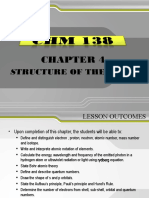0% found this document useful (0 votes)
3 views3 pagesStructure of An Atom - Revision Notes
Uploaded by
rshridiyaCopyright
© © All Rights Reserved
We take content rights seriously. If you suspect this is your content, claim it here.
Available Formats
Download as PDF, TXT or read online on Scribd
0% found this document useful (0 votes)
3 views3 pagesStructure of An Atom - Revision Notes
Uploaded by
rshridiyaCopyright
© © All Rights Reserved
We take content rights seriously. If you suspect this is your content, claim it here.
Available Formats
Download as PDF, TXT or read online on Scribd
/ 3























































